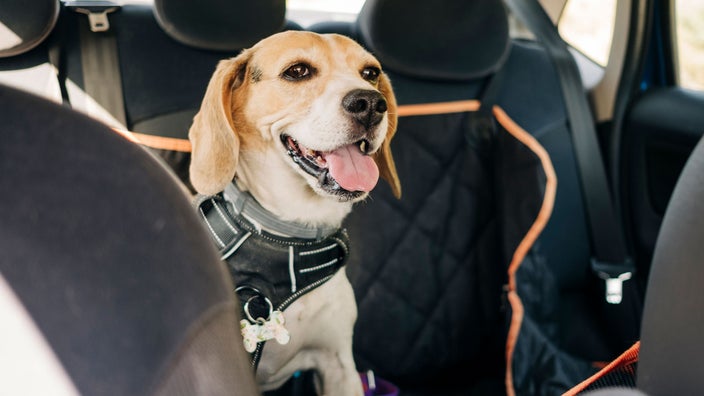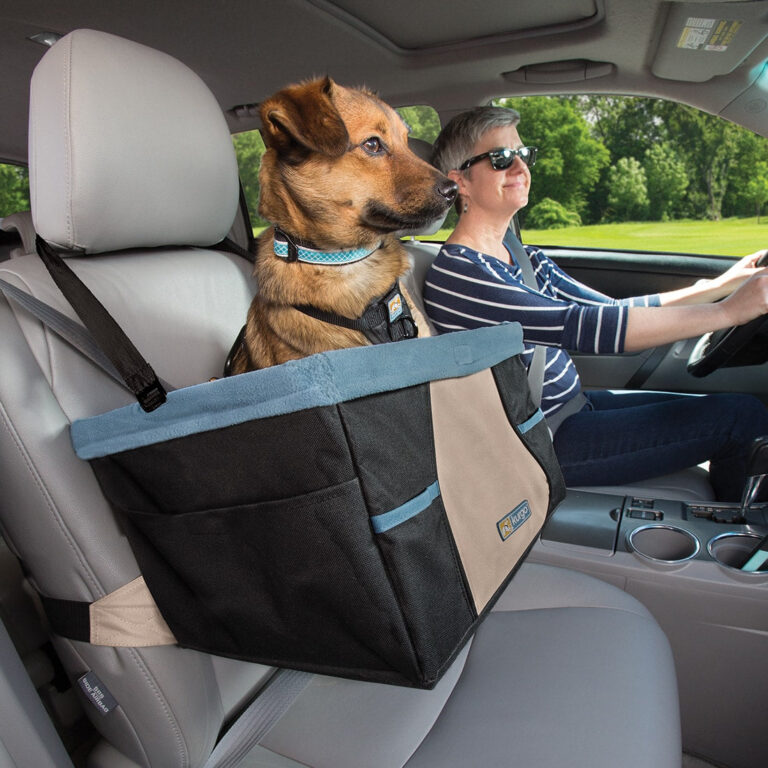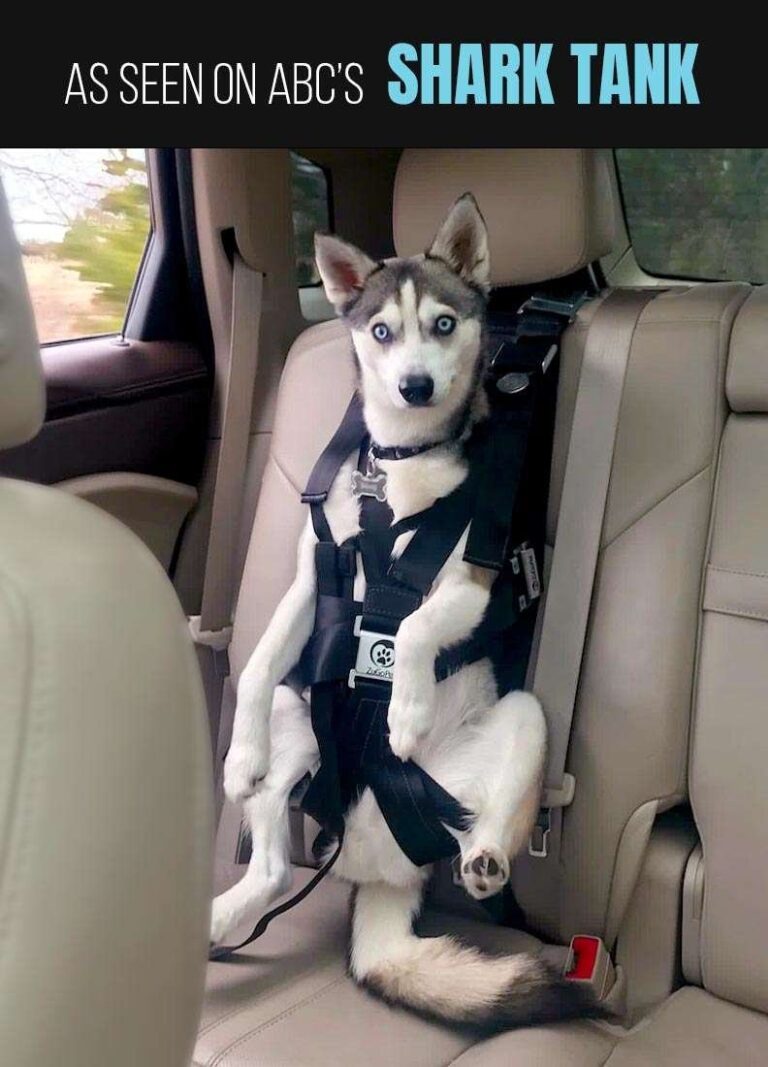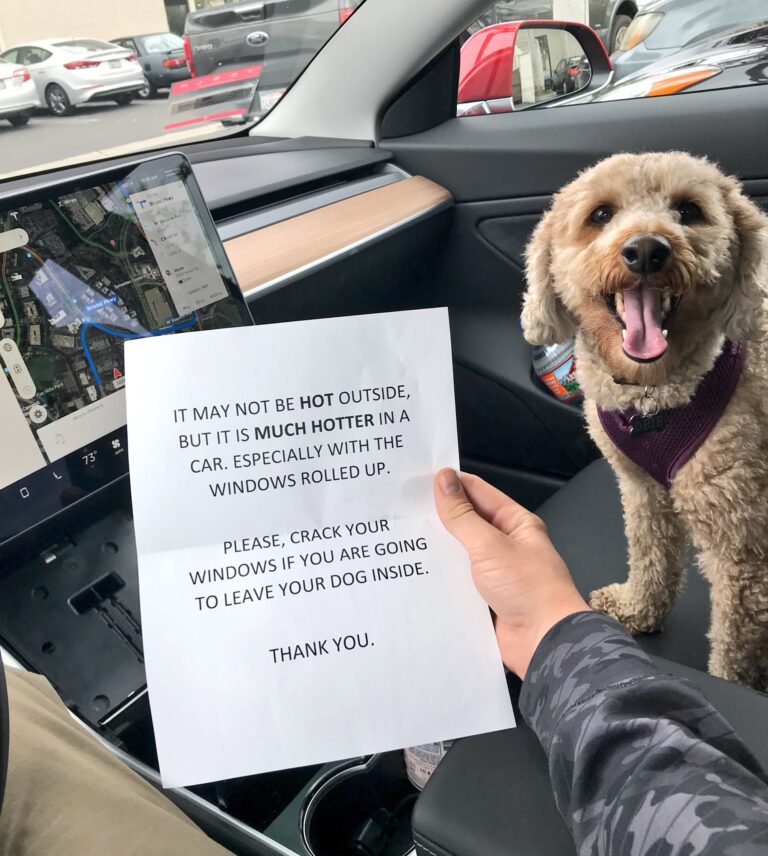Do I Need a Dog Seatbelt? Ensuring Pet Safety on the Road
Yes, a dog seatbelt is essential for your pet’s safety during car rides. It prevents injuries and keeps your dog secure.
Dog seatbelts protect your pet during sudden stops or accidents, reducing the risk of injury. They also prevent distractions while driving, ensuring a safer journey for both you and your pet. Some states have laws requiring pet restraints in vehicles, making dog seatbelts not just a safety measure but a legal necessity.
Seatbelts come in various designs to suit different dog sizes and breeds, ensuring comfort and security. Investing in a quality dog seatbelt is a small step towards safeguarding your furry friend’s well-being on the road. Prioritize your dog’s safety with a reliable seatbelt.
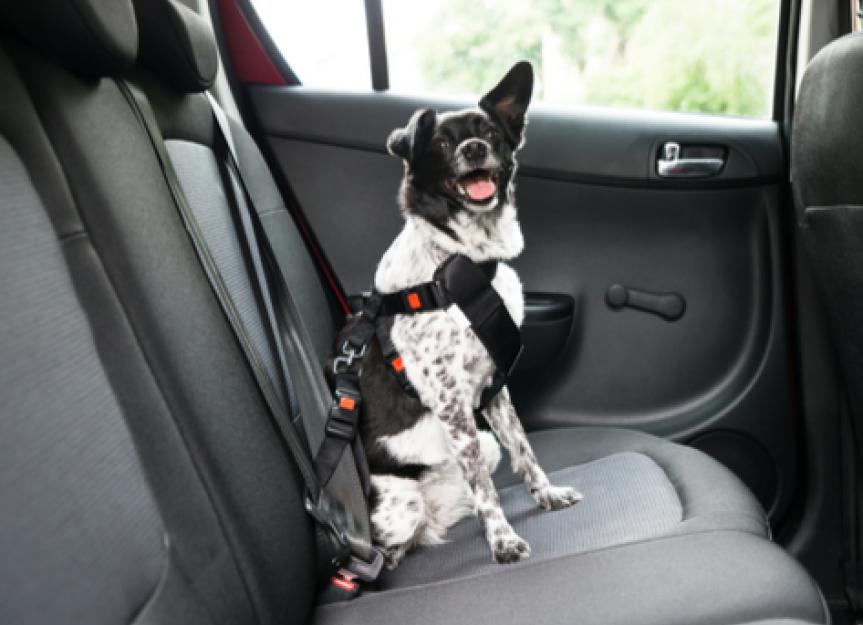
Credit: www.petmd.com
The Importance Of Pet Safety During Travel
Traveling with your dog can be fun, but keeping them safe is important. Many pet owners overlook the importance of pet safety during travel. Just like humans, dogs need protection in a moving vehicle. Using a dog seatbelt can help ensure their safety.
Risks Of Unrestrained Pets In Vehicles
Unrestrained pets in vehicles can cause many problems:
- They can be a distraction to the driver.
- In an accident, they can become a projectile.
- They can get injured by sudden stops or turns.
- They might jump out of open windows.
Even calm pets can become a risk. A sudden loud noise or a quick stop can scare them. This can lead to unpredictable behavior.
Benefits Of Securing Your Dog
Securing your dog with a seatbelt has many benefits:
- It keeps them safe during travel.
- It reduces distractions for the driver.
- It prevents them from jumping out.
- It minimizes the risk of injury in accidents.
A dog seatbelt also helps in keeping your pet calm. They feel more secure when they are restrained. Traveling becomes a pleasant experience for both you and your pet.
| Risks of Unrestrained Pets | Benefits of Securing Your Dog |
|---|---|
| Driver Distraction | Reduced Distraction |
| Projectile in Accident | Injury Prevention |
| Jumping Out of Windows | Prevent Jumping Out |
| Unpredictable Behavior | Calm and Secure Pet |
Legal Requirements For Dog Restraints
Many dog owners wonder if they need a seatbelt for their pets. Understanding the legal requirements for dog restraints can help. These laws vary across states, so knowing them is crucial.
State-specific Laws
Some states have clear laws about dog restraints in vehicles. In California, pets must be restrained or contained within a crate. New Jersey mandates that dogs must wear seatbelts or be in a crate. Hawaii prohibits drivers from having pets on their laps.
| State | Law |
|---|---|
| California | Pets must be restrained or crated. |
| New Jersey | Dogs must wear seatbelts or be in a crate. |
| Hawaii | No pets on driver’s lap. |
Consequences Of Non-compliance
Failing to comply with these laws can lead to fines and penalties. In New Jersey, fines range from $250 to $1,000. Hawaii issues citations for distracted driving if a pet is on your lap. Unrestrained pets can also cause accidents, leading to more severe consequences.
Insurance companies may deny claims if an unrestrained pet causes an accident. This can lead to higher costs and legal issues. Keeping your pet restrained is essential for safety and legal reasons.
Types Of Dog Restraints For Cars
When traveling with your dog, safety should be a top priority. Using the right car restraint for your dog can prevent injuries and distractions. There are several types of dog restraints for cars to consider. Each type offers unique benefits to keep your furry friend safe and secure during the ride.
Dog Seatbelts And Harnesses
Dog seatbelts and harnesses are popular choices for car travel. These restraints secure your dog with minimal movement, reducing the risk of injury. A dog seatbelt attaches to the car’s seatbelt system, while a harness fits around your dog’s body. Both options keep your pet safely in place.
- Dog Seatbelts: Easy to use and attach to existing seatbelts.
- Harnesses: Distributes force across the body, preventing neck injuries.
Carriers And Crates
Carriers and crates provide a confined space for your dog during travel. These restraints are ideal for smaller dogs or for longer trips. They offer a safe, enclosed area that can reduce anxiety and movement.
| Type | Benefits |
|---|---|
| Carriers: | Portable and can be used outside the car. |
| Crates: | Sturdy and provides ample space for your dog. |
Backseat Barriers
Backseat barriers prevent your dog from climbing into the front seat. These barriers create a physical division between the front and back of the car. They are easy to install and remove, making them convenient for quick trips.
- Mesh Barriers: Lightweight and breathable.
- Metal Barriers: Durable and sturdy.
Backseat barriers are perfect for larger dogs that need more room to move.

Credit: www.quora.com
How To Choose The Right Dog Seatbelt
Choosing the right dog seatbelt is crucial for your pet’s safety during car rides. Not all seatbelts fit every dog or vehicle. Careful consideration ensures your furry friend is secure and comfortable. Follow these guidelines to make the best choice for your dog’s seatbelt.
Assessing Size And Fit
Start by measuring your dog. Use a tape measure to get the chest and neck circumference. Compare these measurements with the seatbelt’s size chart. A good fit is neither too tight nor too loose. It should allow some movement but keep your dog secure. Ensure the seatbelt has adjustable straps. This feature helps you achieve the perfect fit.
Material And Durability Considerations
Choose materials that are strong and long-lasting. Look for seatbelts made of nylon or polyester. These materials offer durability and comfort. Check the stitching and buckles. They should be robust and resistant to wear and tear. A seatbelt with padded areas provides extra comfort. This is especially important for long car trips.
Compatibility With Your Vehicle
Ensure the seatbelt is compatible with your car. Some seatbelts clip into the car’s seatbelt buckle. Others attach to the car’s seatbelt. Verify the seatbelt’s attachment method matches your vehicle’s design. Look for universal fit options if you have multiple cars. These types adjust to fit various seatbelt systems. Consider how easily you can install and remove the seatbelt. A quick-release mechanism can be very convenient.
| Feature | Details |
|---|---|
| Size | Adjustable straps, size chart comparison |
| Material | Nylon, polyester, padded areas |
| Compatibility | Car’s seatbelt buckle, quick-release mechanism |
By following these guidelines, you can select a dog seatbelt that offers maximum safety and comfort for your pet. Remember, a well-chosen seatbelt can make car rides a joyful and secure experience for both you and your dog.
Installation And Usage Of Dog Seatbelts
Ensuring your dog’s safety in a car is crucial. A dog seatbelt can help. It keeps your furry friend secure and minimizes distractions. This section will guide you through the installation and usage of dog seatbelts.
Step-by-step Installation Guide
Installing a dog seatbelt is simple. Follow these steps to get started:
- Choose the Right Seatbelt: Pick a seatbelt that suits your dog’s size and weight.
- Attach the Seatbelt: Clip the seatbelt to your dog’s harness, not the collar. This prevents neck injuries.
- Connect to the Car: Insert the seatbelt into your car’s seatbelt buckle. Ensure it clicks securely.
- Adjust the Length: Adjust the seatbelt to allow some movement but restrict excessive roaming.
Training Your Dog To Use The Seatbelt
Training your dog to use a seatbelt is important. Follow these steps for a smooth transition:
- Start Slowly: Let your dog wear the harness around the house first.
- Introduce the Car: Let your dog explore the car while wearing the harness.
- Short Trips: Begin with short car rides to help your dog get used to the seatbelt.
- Positive Reinforcement: Use treats and praise to create a positive association with the seatbelt.
By following these steps, you can ensure your dog’s safety and comfort during car rides. A dog seatbelt is a simple yet effective tool for protecting your furry friend.
Safety Testing And Certification For Dog Seatbelts
Ensuring your dog’s safety in the car is crucial. Dog seatbelts can make car rides safer for both you and your furry friend. But how do you know if a dog seatbelt is reliable? Safety testing and certification are key factors to consider.
Crash Test Standards
Crash test standards help determine if a dog seatbelt is safe. Dog seatbelts should meet specific crash test standards. These tests replicate car accidents to see how the seatbelt performs. A good dog seatbelt should keep your pet secure in a crash.
Some of the standards include:
- Federal Motor Vehicle Safety Standards (FMVSS)
- Center for Pet Safety (CPS) standards
- European Union (EU) safety standards
FMVSS focuses on general safety in vehicles. CPS offers pet-specific testing. EU safety standards are also important for international products.
Certification Bodies And Endorsements
Certification bodies ensure that dog seatbelts meet safety standards. The Center for Pet Safety (CPS) is a well-known certification body. They perform rigorous tests to ensure product reliability.
| Certification Body | Endorsements |
|---|---|
| Center for Pet Safety (CPS) | Veterinary endorsements |
| Federal Motor Vehicle Safety Standards (FMVSS) | Automotive industry endorsements |
| European Union (EU) Safety Standards | International safety endorsements |
Veterinary endorsements can also add credibility. Many vets recommend CPS-certified products. Automotive industry endorsements are valuable too. They show that the product meets high safety standards.
Travel Tips For Dogs In Cars
Traveling with your dog can be an enjoyable adventure. Proper preparation ensures your pet’s safety and comfort during car rides. Here are some essential travel tips for dogs in cars to make your journey smoother.
Managing Anxiety And Motion Sickness
Many dogs experience anxiety and motion sickness during car trips. To help them relax, create a familiar environment in the car. Bring their favorite toys, blankets, or even a piece of your clothing with your scent.
Incorporate calming aids such as pheromone sprays, calming collars, or anxiety wraps. These products can help to reduce stress levels. For motion sickness, consider feeding your dog a light meal a few hours before the trip.
Consult your vet for medications that can alleviate symptoms of motion sickness if necessary.
Stopping For Breaks And Exercise
Dogs need regular breaks during long car rides. Plan to stop every 2-3 hours to allow your dog to stretch, relieve themselves, and burn off some energy.
Find safe and secure areas for these breaks. Always use a leash to keep your dog safe. Play a quick game of fetch or take a short walk to keep them active and happy.
Maintaining Hydration And Comfort
Keeping your dog hydrated is crucial during car trips. Bring a portable water bowl and offer water during each stop. Avoid overfeeding before the trip to prevent discomfort.
Ensure your dog has a comfortable place to sit or lie down. Use a dog seatbelt, harness, or carrier to keep them secure. This ensures their safety and reduces the risk of injury.
Consider the car’s temperature. Use sunshades to block direct sunlight and keep the car cool.
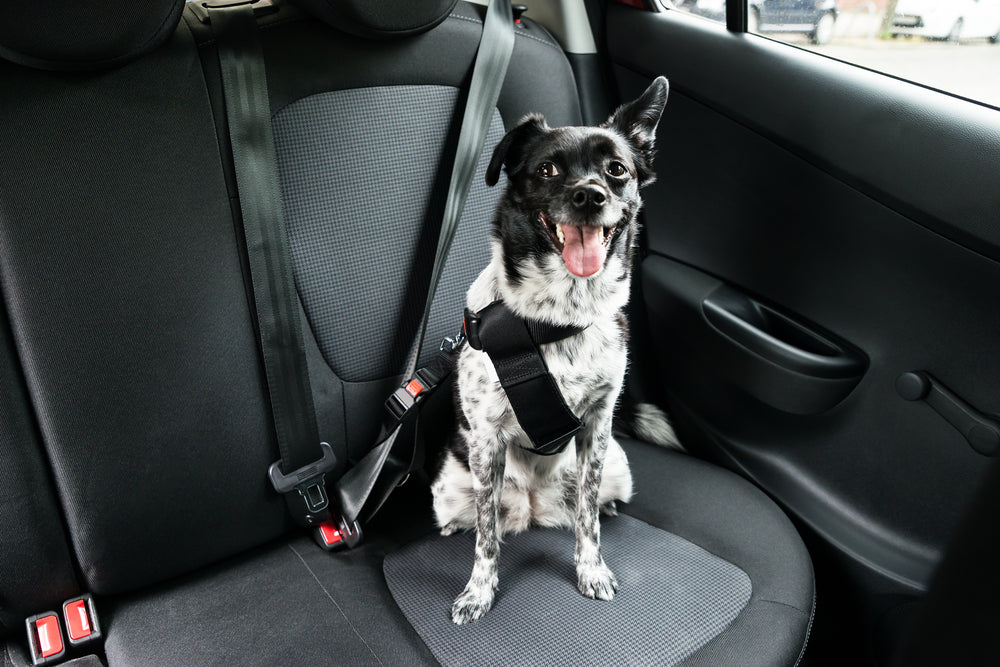
Credit: www.dutch.com
Alternatives To Dog Seatbelts
Not all dogs enjoy wearing seatbelts. Some dogs prefer other methods of restraint. Here, we explore alternatives to dog seatbelts that can keep your pet safe and comfortable during car rides.
Portable Dog Car Seats
Portable dog car seats are an excellent option for small dogs. These seats provide a secure space for your pet while traveling. They often come with built-in harnesses to keep your dog in place.
- Easy to install and remove
- Provide a comfortable space for your pet
- Often include safety harnesses
Portable car seats can be attached to your car’s existing seatbelt system. This ensures your dog stays safe in case of sudden stops.
Custom Vehicle Modifications
Custom vehicle modifications offer a more permanent solution. These modifications are ideal for frequent travelers with larger dogs. They can include built-in barriers, crates, or even specialized dog compartments.
| Modification Type | Best For | Benefits |
|---|---|---|
| Built-in Barriers | Medium to large dogs | Prevents dogs from roaming the car |
| Crates | All dog sizes | Provides a secure and familiar space |
| Specialized Compartments | Large dogs | Maximizes comfort and safety |
These modifications can be customized to fit your vehicle and your dog’s needs. They offer a high level of safety and comfort for long trips.
Frequently Asked Questions
Are Dog Seat Belts Necessary?
Dog seat belts are necessary for safety. They prevent distractions, protect pets during accidents, and can save lives.
What States Require Dog Seat Belts?
New Jersey and Rhode Island require dog seat belts. New Jersey mandates pets be restrained in vehicles. Rhode Island recommends restraint for safety.
Are Dog Car Seats Necessary?
Dog car seats enhance safety, prevent distractions, and provide comfort during travel. They are essential for secure and stress-free trips.
Do I Need A Harness For My Dog In The Car?
Yes, you need a harness for your dog in the car. It ensures safety and prevents distractions.
Conclusion
Securing your dog with a seatbelt ensures their safety during car rides. It minimizes risks and distractions. Consider investing in a dog seatbelt for peace of mind. A small step towards safety can make a big difference. Keep your furry friend safe and happy on every journey.
- Can I Get in a Taxi Without a Car Seat? - January 26, 2025
- Can I Get Chlamydia From a Toilet Seat? - January 26, 2025
- Can I Get an Uber With a Car Seat? - January 26, 2025

